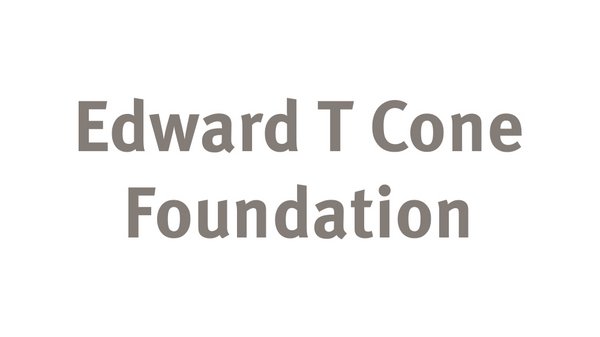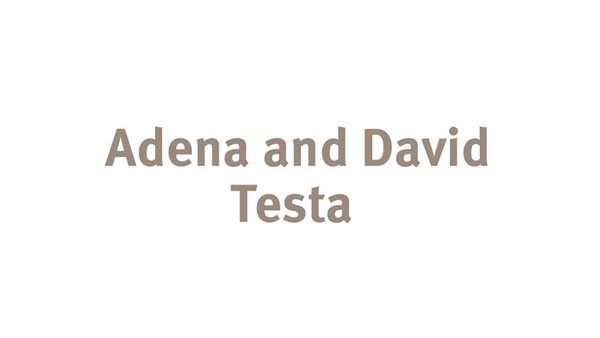-
Topics
backTopicsOur programs create spaces where open-minded leaders can gather for breakthrough conversations on pressing global issues – each aligned to one of the following pillars:
-
Events
backEventsExplore the variety of events Salzburg Global hosts within Austria and in the rest of the world. Learn more about our programs and what else happens at Schloss Leopoldskron.Upcoming EventsFeb 05 - Feb 07, 2026Peace & JusticeDisruption and Renewal: Charting the Future of the International Rule of Law, Democracy, and PluralismSalzburg Cutler Fellows Law ProgramApr 13 - Apr 18, 2026CultureCreating Futures: Rethinking Cultural Institutions, Infrastructure, and InvestmentCulture, Arts and Society
- Insights
-
Fellowship
backFellowshipSince 1947, more than 40,000 people from over 170 countries have participated in Salzburg Global's sessions. Collectively, these alumni are known as Salzburg Global Fellows.
-
About Us
backAbout UsSalzburg Global is an independent, non-profit organization committed to creating spaces that overcome barriers and open up a world of better possibilities.Our Approach
-
Support Us
backSupport UsYour generosity helps us gather open-minded leaders for breakthrough conversations, while creating space for dialogue that overcomes barriers and opens up a world of better possibilities.
- Donate
- Date
- Apr 06 - Apr 11, 2025
- Session no.
- S898-01
- Program
- Culture, Arts and Society
- Location
-
Hybrid
Share
Culture
Creating Futures: Art of Narrative
In an era when misinformation, disinformation, polarization, and reductive narratives spread rapidly online through social media and disruptive emerging technologies such as Artificial Intelligence and Machine Learning, issues like migration, climate change, social justice, identity politics and political ideology are often misrepresented and misinterpreted, fueling divisive and exclusionary perspectives and policies. Artistic and creative expression, therefore, play a critical role in countering these stereotypes and inaccuracies, creating space for complex human-centered stories that rise above such polarized discourse. Artists and cultural practitioners are pivotal to combatting mistrust and distrust to safeguard democratic institutions from a credibility crisis.
By offering nuanced perspectives, artists reveal the intricate realities of our lives and the pressing issues that impact us all. This program will delve into artistic and narrative strategies that elevate diverse perspectives, using creative expression to bridge divides, foster trust, reshape public awareness and discourse, and uphold pluralistic, inclusive, and equitable social, cultural, and democratic values.
Narrative strategies, whether through language, audio, visuals, or performance, can transform societal perspectives, engage communities, and foster empathy. As Nigerian author Chimamanda Ngozi Adichie observed in her TED Talk, The Danger of a Single Story, “Our lives, our cultures, are composed of many overlapping stories, if we hear only a single story about another person or country, we risk a critical misunderstanding.” This insight is more relevant than ever as societies confront the consequences of one-dimensional narratives that oversimplify complex identities and exclude diverse perspectives.
For instance, digital narratives around migration have often reinforced stereotypes and misinformation, fueling xenophobic sentiment and restrictive policies. In contrast, the arts provide an antidote by humanizing these experiences, as seen in Ai Weiwei’s ‘Human Flow’, a documentary that reframes the refugee crisis through intimate, human-centered storytelling. By shifting from statistics to individual stories, this work allows audiences to connect personally with displaced individuals’ struggles and resilience.
Narratives are crucial in shaping collective memory and cultural identity. In many institutions, histories have often been told from a limited perspective, sidelining contributions and experiences from diverse, persecuted, and marginalized communities. This program will bring together artists, researchers, and activists who are developing counter-narratives that humanize overlooked voices, encourage understanding, and provide an essential platform for freedom of expression and inclusive democracy.
The program will focus on five distinct storytelling landscapes:
1. Digital Arenas: This encompasses social media, online platforms, and virtual spaces where stories can rapidly reach global audiences. This strand will explore strategies to foster inclusive, ethical storytelling online, addressing challenges like misinformation and AI, reclaiming digital influence for authentic narratives.
2. Creative Currents: This landscape explores artistic and cultural expressions that influence narratives within and beyond traditional cultural institutions. Focusing on the evolving role of artists and creative practitioners, this strand examines how inclusive storytelling can engage contemporary audiences, bringing diverse narratives and lived experiences into the broader cultural conversation.
3. Neural Pathways: The human body and mind serve as intimate storytelling spaces where art connects with neuroscience, evoking empathy, resilience, and connection. This strand will delve into how artistic experiences impact the brain, fostering empathy and emotional understanding that transcends cultural divides.
4. Civic Stages: These represent the stories and values that shape collective identity and community resilience. Participants will explore how storytelling within civic contexts—through art, media, and community-driven narratives—can foster shared values, strengthen social bonds, and mobilize voices around common goals, celebrating the cultural heritage that unites diverse communities.
5. Public Places: Parks, plazas, and urban spaces are sites for visible, interactive storytelling that intersects with everyday life. This strand focuses on creative placemaking through murals, installations, and performances that invite community engagement, fostering dialogue, inclusivity, and social cohesion in communal spaces.
Date
Apr 06 - Apr 11, 2025
Session no.
S898-01
Location
Hybrid
Share
Program Overview
The goals of this program are to:
1. Empower Inclusive Storytelling: Equip artists, cultural leaders, and advocates with tools to amplify diverse narratives, fostering equity and inclusivity across storytelling landscapes.
2. Cultivate Narrative Strategies: Enable participants to develop skills for responsible storytelling that counter misinformation, engage audiences, and advance freedom of expression across digital, public, and cultural spaces.
3. Strengthen Social Resilience through Art: Leverage storytelling and art as powerful tools to build community bonds, foster empathy, and support social cohesion, using narratives to drive positive societal transformation.
Participants will collaborate to co-create and produce outputs that contribute significantly to the influencing of narrative strategy and creative storytelling.
Learn more about what participants in the 2024 Creating Futures: Art and AI program produced in our Digital Publication
This hybrid program will build new insights and aggregate perspectives and experiences from different parts of the creative and cultural sectors. Participants will:
EXPERIENCE...
• A candid and open exchange with peers under the Chatham House Rule.
• A retreat-like setting, with time and space to disconnect and reflect from a wider ecosystem and gain perspective.
GAIN...
• Connection to an active international community of outstanding leaders working on this topic.
• Inspiration and learning from across the world and foresight into directions for future work.
• Relationships for coalition building across organizational, professional and geographical boundaries.
• Access to a vast network of Salzburg Global Fellows working across sectors to shape a better world.
GIVE AND RECEIVE...
• Promising practices and drawing on the group’s collective intelligence and experience to tackle challenges you face and leverage important opportunities.
• Information about projects, approaches, resources and case studies relevant to this topic.
• Opportunities for peer mentoring on ways to incubate, replicate, adapt and scale good practices.
This highly interactive, hybrid program will bring together 40 participants from across the globe for two online sessions and a four and half-day residential program at Schloss Leopoldskron, home of Salzburg Global Seminar, in Salzburg, Austria.
Participants should be available on the following dates:
• Co-Creation Meeting 1, March 6th, 2025: 15:00 to 16:30 CET
• Co-Creation Meeting 2, March 13th, 2025: 15:00 to 16:30 CET
• In - Person Program, April 6th (from 15:00 CET) to April 11th (departure), 2025
• Online engagement through 2025
The Creating Futures: Art of Narrative program will convene 40 participants from diverse creative fields and will prioritize participants from across the Majority World, including Africa, Asia, Latin America, the Caribbean, and parts of the Middle East.
This year’s program will bring together:
• Artists and Creative Practitioners
• Cultural Leaders and Heritage Specialists
• Media Professionals
• Technologists and Digital Innovators
• Political and Communication Scientists
• Community Advocates and Social Activists
• Educators and Academic Researchers
• Public Historians and Archivists
Salzburg Global Seminar is dedicated to creating inclusive, international, interdisciplinary, and intergenerational programs. We prioritize participation of individuals from communities historically less visible in the arts and culture sector, we will actively seek to represent people of color, disabled individuals, those who identify as LGBT*, and participants from low-income, Indigenous, ethnically diverse, or migrant backgrounds.
*Majority World: This term shifts focus to the fact that the majority of the world’s population lives outside of the wealthiest, traditionally Western countries, primarily referring to countries across Africa, Asia, Latin America, the Caribbean, and parts of the Middle East. It reframes perspectives to recognize the diversity, innovation, and critical viewpoints from these regions without reinforcing outdated hierarchies.
**LGBT: Lesbian, Gay, Bisexual, and Transgender. This term is widely recognized in human rights discussions on sexual orientation and gender identity in many parts of the world. It is intended to be inclusive of other cultural concepts, contemporary or historical, that express sexuality, gender, intersex, and gender non-conforming identities.
Apply
Applications for funded scholarships (covering travel, participation, room and board costs) to participate in this program has closed on November 28th, 2024.
Selection will prioritize participants from across the Majority World, including Africa, Asia, Latin America, the Caribbean, and parts of the Middle East. We prioritize participation of individuals from communities historically less visible in the arts and culture sector, we will actively seek to represent people of color, disabled individuals, those who identify as LGBT*, and participants from low-income, Indigenous, ethnically diverse, or migrant backgrounds.
*Majority World: This term shifts focus to the fact that the majority of the world’s population lives outside of the wealthiest, traditionally Western countries, primarily referring to countries across Africa, Asia, Latin America, the Caribbean, and parts of the Middle East. It reframes perspectives to recognize the diversity, innovation, and critical viewpoints from these regions without reinforcing outdated hierarchies.
**LGBT: Lesbian, Gay, Bisexual, and Transgender. This term is widely recognized in human rights discussions on sexual orientation and gender identity in many parts of the world. It is intended to be inclusive of other cultural concepts, contemporary or historical, that express sexuality, gender, intersex, and gender non-conforming identities.



